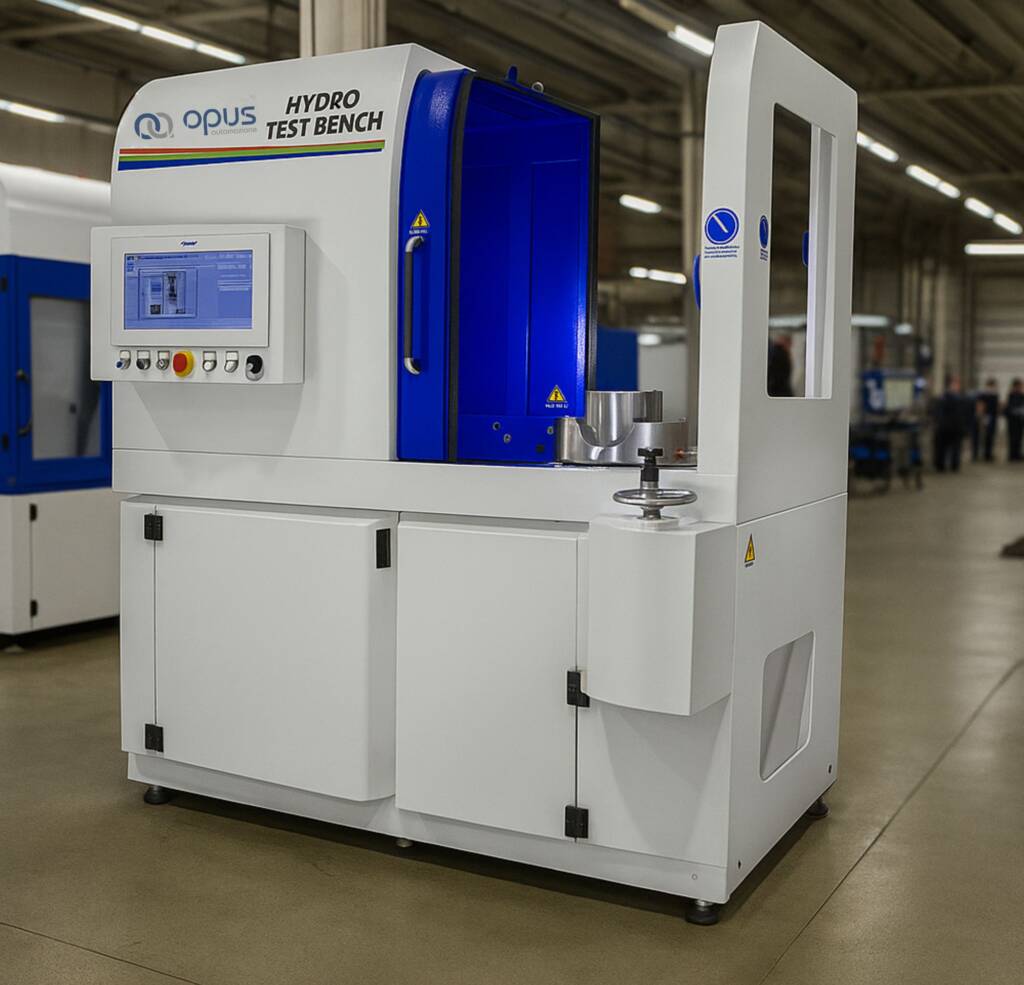Leak test bench

Leak detection and operational safety with leak test benches:
Leak test benches are systems designed to verify the integrity and sealing performance of industrial components operating under pressure or containing fluids, such as valves, fittings, machine housings, and casings.
Through tests conducted under controlled conditions, these benches can detect even micro-leaks that are not visible to the naked eye, ensuring the functional safety of components and their compliance with technical and environmental regulations.
Technical Specifications of Leak Test Benches
Leak testing is essential to prevent malfunctions, contamination, and hazardous leaks, particularly in sectors where reliability and operational safety are top priorities.
Our benches are designed to provide maximum sensitivity in leak detection and ensure result repeatability, thanks to advanced measurement technologies and highly configurable control systems.
Controlled pressure testing, with programmable load curves tailored to the component under test
Hermeticity verification of materials, welds, and joints, including detection of micro-leaks not visible to the naked eye
Modular and adaptable structure, suitable for different component sizes and formats
Easy integration into manual or automated testing lines
Compatibility with critical environments, including those subject to specific regulatory requirements
Applications and Reference Standards
Leak test benches are used across multiple industrial sectors, especially where even minimal leakage can impact quality, safety, or production environments:
Hydraulics and pneumatics – cylinders, valves, piping
Energy industry – heat exchangers, safety valves, tanks
Automotive and transportation – engine components, fluid circuits
Pharmaceutical and chemical – tanks, containers, process equipment
Gli standard qualitativi da rispettare fanno riferimento ad alcune normative che regolano il funzionamento del banco stesso:
ISO 20484 – Leak testing methodologies
EN 1779 / ISO 6781 – Leak detection and classification
PED Directive 2014/68/EU – Pressure equipment directive
Industry-specific standards (e.g., GMP, FDA for the pharmaceutical sector)
Technical Features of Our Leak Test Benches
High leak detection sensitivity, using high‑precision sensors with minimal measurement error
Electronic pressure control, to simulate real or extreme operating conditions
Real‑time data acquisition, with customizable software and SCADA interfaces
Compatibility with various materials and geometries, enabling testing of complex or custom components
Integrated safety systems, ensuring operator protection during every phase of the test
What Our Service Includes
We take care of everything, from A to Z
We have designed our entire service process to ensure maximum simplicity, allowing our clients to fully focus on other strategic aspects of their business while we handle the rest.
Feasibility analysis and study
Design and technical development
Construction & assembly
Testing & commissioning
Installation and training
Contact Us for a Customized Quote
Tailor-made solutions for the specific needs of your industry.
Our experts are ready to support you.
Customized solutions for every industrial sector.
Dedicated consulting for each phase of the project.
Specialized and continuous technical support.
Technological innovation to improve operational efficiency.
